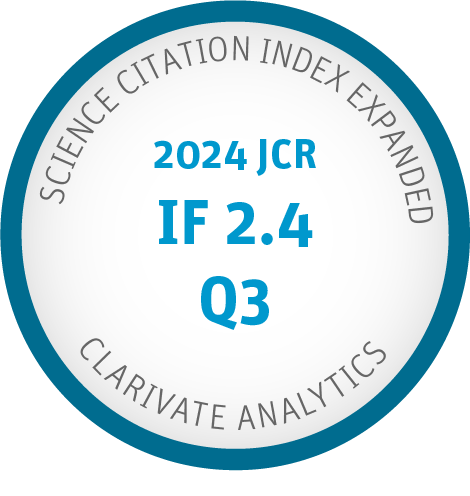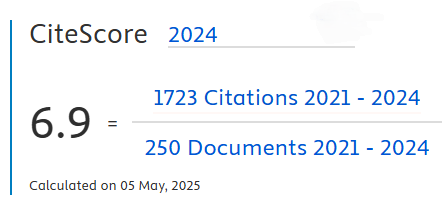Attention Embedded Residual Bottleneck CNN Architecture for Breast Cancer Diagnosis in Ultrasound Images
DOI:
https://doi.org/10.9781/ijimai.2025.03.005Keywords:
Breast Cancer, Deep Learning, Feature Extraction, Feature Fusion, Feature OptimizationAbstract
Breast cancer (BrC) stands as the predominant cancer among women, resulting in a substantial global mortality toll each year. Early detection plays a pivotal role in diminishing mortality rates. Manual diagnosis of BrC is time-intensive, intricate, and prone to errors, emphasizing the necessity for an automated system for timely detection. Various imaging methods have been investigated, underscoring the crucial need for accurate detection to prevent unwarranted treatments and biopsies. Recent years have witnessed substantial exploration and enhancement in the application of DL for efficiently processing medical images. This study aiming to create an effective and resilient DL framework for BrC detection and classification. The steps are contrast enhancement and augmentation, a hybrid CNN network ‘BrC-DeepRBNet’ is introduced that is built from scratch and incorporates several design elements including residual blocks, bottleneck architecture, and a self-attention mechanism. This framework is employed to construct two networks, one comprising of 107 layers and the other with 149 layers. Moreover, the network capitalizes on the benefits offered by batch normalization (BN) and group normalization (GN), utilizes ReLU and leaky ReLU as activation functions, and integrates Max pooling layer into its architecture in a series of residual-bottleneck blocks. Further, for feature fusion horizontal approach is used and optimization is done using generalized normal distribution optimization (GNDO). The selected features are further classified using neural network classifiers. The introduced framework achieved the highest classification accuracy at 97.05% with publicly available BUS dataset. A detailed ablation study is presented that demonstrates the superior performance of the presented approach, surpassing various pre-trained models (i.e. AlexNet, InceptionV3, ResNet50, and ResNet101) and existing BrC detection and classification techniques.
Downloads
References
[A. A. C. Society. (2023, 25 Aug, 2023). Cancer Facts & Figures 2023. Available: https://www.cancer.org/research/cancer-facts-statistics/all-cancer-facts-figures/2023-cancer-facts-figures.html
S. Lyu and R. C. Cheung, “Efficient and Automatic Breast Cancer Early Diagnosis System Based on the Hierarchical Extreme Learning Machine,” Sensors, vol. 23, p. 7772, 2023.
M. Fatima, M. A. Khan, S. Shaheen, N. A. Almujally, and S. H. Wang, “B2C3NetF2: Breast cancer classification using an end‐to‐end deep learning feature fusion and satin bowerbird optimization controlled Newton Raphson feature selection,” CAAI Transactions on Intelligence Technology, vol. 8, pp. 1374-1390, 2023.
M. Nasser and U. K. Yusof, “Deep Learning Based Methods for Breast Cancer Diagnosis: A Systematic Review and Future Direction,” Diagnostics, vol. 13, p. 161, 2023.
N. Sirjani, M. G. Oghli, M. K. Tarzamni, M. Gity, A. Shabanzadeh, P. Ghaderi, et al., “A novel deep learning model for breast lesion classification using ultrasound Images: A multicenter data evaluation,” Physica Medica, vol. 107, p. 102560, 2023.
J. M. Lewin, “Digital mammography,” Cancer imaging, pp. 455-458, 2008.
Y. Kojima and H. Tsunoda, “Mammography and ultrasound features of triple-negative breast cancer,” Breast Cancer, vol. 18, pp. 146-151, 2011.
M. Kriege, C. T. Brekelmans, C. Boetes, P. E. Besnard, H. M. Zonderland, I. M. Obdeijn, et al., “Efficacy of MRI and mammography for breast-cancer screening in women with a familial or genetic predisposition,” New England Journal of Medicine, vol. 351, pp. 427-437, 2004.
X. Yao, W. Wei, J. Li, L. Wang, Z. Xu, Y. Wan, et al., “A comparison of mammography, ultrasonography, and far-infrared thermography with pathological results in screening and early diagnosis of breast cancer,” Asian Biomedicine, vol. 8, pp. 11-19, 2014.
M. Fatima, M. Attique Khan, S. Shaheen, H. M. Albarakati, S. Wang, S. F. Jilani, et al., “Breast Lesion Segmentation and Classification using U-Net Saliency Estimation and Explainable Residual Convolutional Neural Network,” Fractals, 2024.
X. Yu, Q. Zhou, S. Wang, and Y. D. Zhang, “A systematic survey of deep learning in breast cancer,” International Journal of Intelligent Systems, vol. 37, pp. 152-216, 2022.
E. M. El Houby and N. I. Yassin, “Malignant and nonmalignant classification of breast lesions in mammograms using convolutional neural networks,” Biomedical Signal Processing and Control, vol. 70, p. 102954, 2021.
D. kaba Gurmessa and W. Jimma, “Explainable machine learning for breast cancer diagnosis from mammography and ultrasound images: a systematic review,” BMJ Health & Care Informatics, vol. 31, 2024.
A. Sahu, P. K. Das, and S. Meher, “An efficient deep learning scheme to detect breast cancer using mammogram and ultrasound breast images,” Biomedical Signal Processing and Control, vol. 87, p. 105377, 2024.
K. Atrey, B. K. Singh, and N. K. Bodhey, “Multimodal classification of breast cancer using feature level fusion of mammogram and ultrasound images in machine learning paradigm,” Multimedia Tools and Applications, vol. 83, pp. 21347-21368, 2024.
M. Chegini and A. Mahlooji Far, “Uncertainty-aware deep learning-based CAD system for breast cancer classification using ultrasound and mammography images,” Computer Methods in Biomechanics and Biomedical Engineering: Imaging & Visualization, vol. 12, p. 2297983, 2024.
D. Muduli, R. Dash, and B. Majhi, “Automated breast cancer detection in digital mammograms: A moth flame optimization based ELM approach,” Biomedical Signal Processing and Control, vol. 59, p. 101912, 2020.
K. Atrey, B. K. Singh, and N. K. Bodhey, “Integration of ultrasound and mammogram for multimodal classification of breast cancer using hybrid residual neural network and machine learning,” Image and Vision Computing, vol. 145, p. 104987, 2024.
S. D. Deb and R. K. Jha, “Breast UltraSound Image classification using fuzzy-rank-based ensemble network,” Biomedical Signal Processing and Control, vol. 85, p. 104871, 2023.
S. Gupta, S. Agrawal, S. K. Singh, and S. Kumar, “A Novel Transfer Learning-Based Model for Ultrasound Breast Cancer Image Classification,” in Computational Vision and Bio-Inspired Computing: Proceedings of ICCVBIC 2022, ed: Springer, 2023, pp. 511-523.
S. Bourouis, S. S. Band, A. Mosavi, S. Agrawal, and M. Hamdi, “Meta-heuristic algorithm-tuned neural network for breast cancer diagnosis using ultrasound images,” Frontiers in Oncology, vol. 12, p. 834028, 2022.
A. Sahu, P. K. Das, and S. Meher, “High accuracy hybrid CNN classifiers for breast cancer detection using mammogram and ultrasound datasets,” Biomedical Signal Processing and Control, vol. 80, p. 104292, 2023.
Y. Mo, C. Han, Y. Liu, M. Liu, Z. Shi, J. Lin, et al., “Hover-trans: Anatomy-aware hover-transformer for roi-free breast cancer diagnosis in ultrasound images,” IEEE Transactions on Medical Imaging, 2023.
H. Zou, X. Gong, J. Luo, and T. Li, “A robust breast ultrasound segmentation method under noisy annotations,” Computer Methods and Programs in Biomedicine, vol. 209, p. 106327, 2021.
K. Jabeen, M. A. Khan, M. Alhaisoni, U. Tariq, Y.-D. Zhang, A. Hamza, et al., “Breast cancer classification from ultrasound images using probability-based optimal deep learning feature fusion,” Sensors, vol. 22, p. 807, 2022.
A. Raza, N. Ullah, J. A. Khan, M. Assam, A. Guzzo, and H. Aljuaid, “DeepBreastCancerNet: A Novel Deep Learning Model for Breast Cancer Detection Using Ultrasound Images,” Applied Sciences, vol. 13, p. 2082, 2023.
K. He, X. Zhang, S. Ren, and J. Sun, “Deep residual learning for image recognition,” in Proceedings of the IEEE conference on computer vision and pattern recognition, 2016, pp. 770-778.
K. He, X. Zhang, S. Ren, and J. Sun, “Identity mappings in deep residual networks,” in Computer Vision–ECCV 2016: 14th European Conference, Amsterdam, The Netherlands, October 11–14, 2016, Proceedings, Part IV 14, 2016, pp. 630-645.
Z. Niu, G. Zhong, and H. Yu, “A review on the attention mechanism of deep learning,” Neurocomputing, vol. 452, pp. 48-62, 2021.
A. Rao, J. Park, S. Woo, J.-Y. Lee, and O. Aalami, “Studying the effects of self-attention for medical image analysis,” in Proceedings of the IEEE/CVF International Conference on Computer Vision, 2021, pp. 3416-3425.
Y. Zhang, Z. Jin, and S. Mirjalili, “Generalized normal distribution optimization and its applications in parameter extraction of photovoltaic models,” Energy Conversion and Management, vol. 224, p. 113301, 2020.
A. Chempak Kumar and D. Muhammad Noorul Mubarak, “Classification of Esophageal Cancer Using Ensembled CNN with Generalized Normal Distribution Optimization Model and Support Vector Machine Classifier,” in Congress on Smart Computing Technologies, 2022, pp. 83-111.
D. Chicco and G. Jurman, “The advantages of the Matthews correlation coefficient (MCC) over F1 score and accuracy in binary classification evaluation,” BMC genomics, vol. 21, pp. 1-13, 2020.
M. Xu, K. Huang, and X. Qi, “A Regional-Attentive Multi-Task Learning Framework for Breast Ultrasound Image Segmentation and Classification,” IEEE Access, vol. 11, pp. 5377-5392, 2023.
M. R. Islam, M. M. Rahman, M. S. Ali, A. A. N. Nafi, M. S. Alam, T. K.
Godder, et al., “Enhancing breast cancer segmentation and classification: An Ensemble Deep Convolutional Neural Network and U-net approach on ultrasound images,” Machine Learning with Applications, vol. 16, p. 100555, 2024.
Downloads
Published
-
Abstract61
-
PDF16








